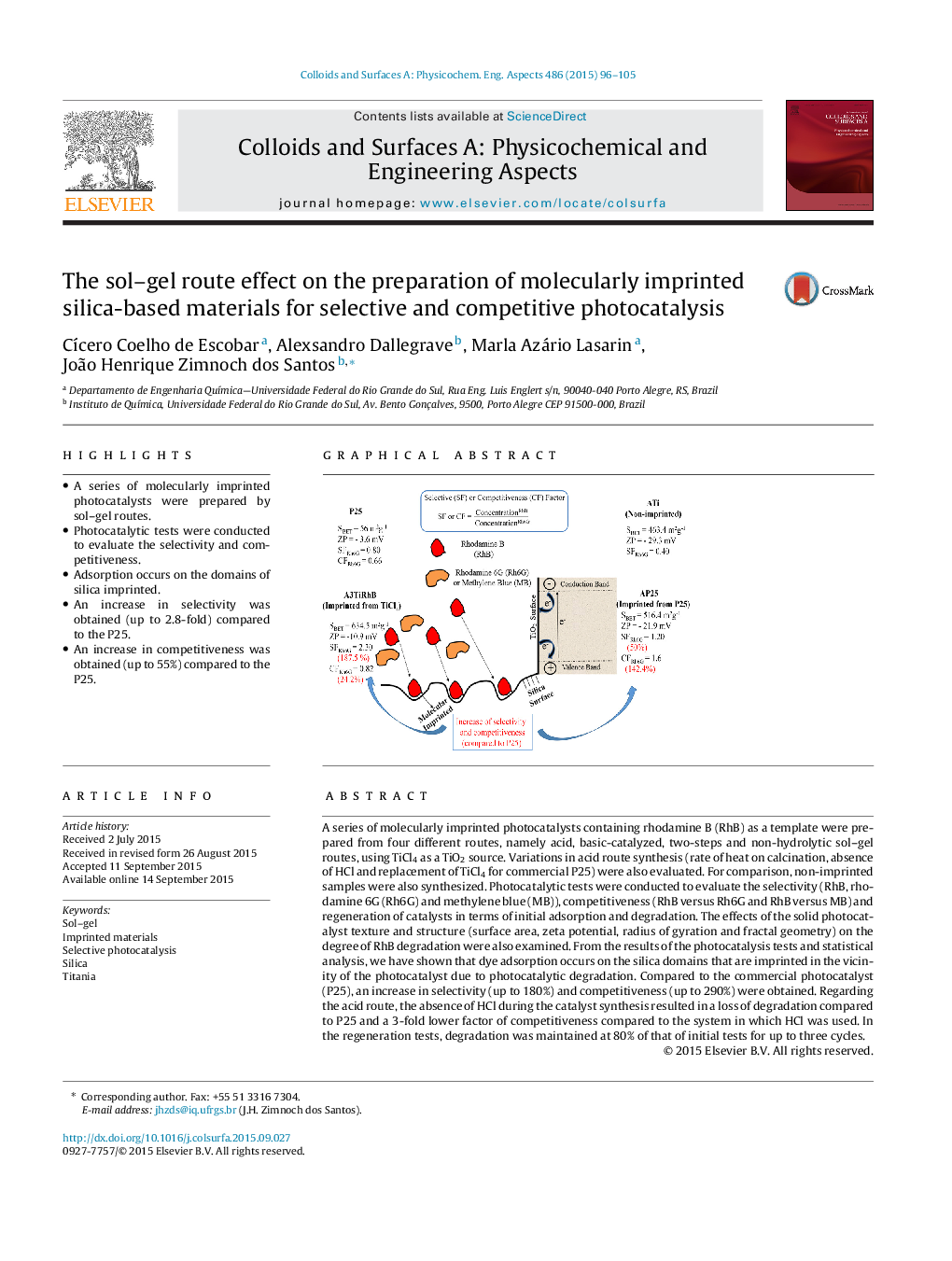| کد مقاله | کد نشریه | سال انتشار | مقاله انگلیسی | نسخه تمام متن |
|---|---|---|---|---|
| 591928 | 1453887 | 2015 | 10 صفحه PDF | دانلود رایگان |
• A series of molecularly imprinted photocatalysts were prepared by sol–gel routes.
• Photocatalytic tests were conducted to evaluate the selectivity and competitiveness.
• Adsorption occurs on the domains of silica imprinted.
• An increase in selectivity was obtained (up to 2.8-fold) compared to the P25.
• An increase in competitiveness was obtained (up to 55%) compared to the P25.
A series of molecularly imprinted photocatalysts containing rhodamine B (RhB) as a template were prepared from four different routes, namely acid, basic-catalyzed, two-steps and non-hydrolytic sol–gel routes, using TiCl4 as a TiO2 source. Variations in acid route synthesis (rate of heat on calcination, absence of HCl and replacement of TiCl4 for commercial P25) were also evaluated. For comparison, non-imprinted samples were also synthesized. Photocatalytic tests were conducted to evaluate the selectivity (RhB, rhodamine 6G (Rh6G) and methylene blue (MB)), competitiveness (RhB versus Rh6G and RhB versus MB) and regeneration of catalysts in terms of initial adsorption and degradation. The effects of the solid photocatalyst texture and structure (surface area, zeta potential, radius of gyration and fractal geometry) on the degree of RhB degradation were also examined. From the results of the photocatalysis tests and statistical analysis, we have shown that dye adsorption occurs on the silica domains that are imprinted in the vicinity of the photocatalyst due to photocatalytic degradation. Compared to the commercial photocatalyst (P25), an increase in selectivity (up to 180%) and competitiveness (up to 290%) were obtained. Regarding the acid route, the absence of HCl during the catalyst synthesis resulted in a loss of degradation compared to P25 and a 3-fold lower factor of competitiveness compared to the system in which HCl was used. In the regeneration tests, degradation was maintained at 80% of that of initial tests for up to three cycles.
Figure optionsDownload as PowerPoint slide
Journal: Colloids and Surfaces A: Physicochemical and Engineering Aspects - Volume 486, 5 December 2015, Pages 96–105
